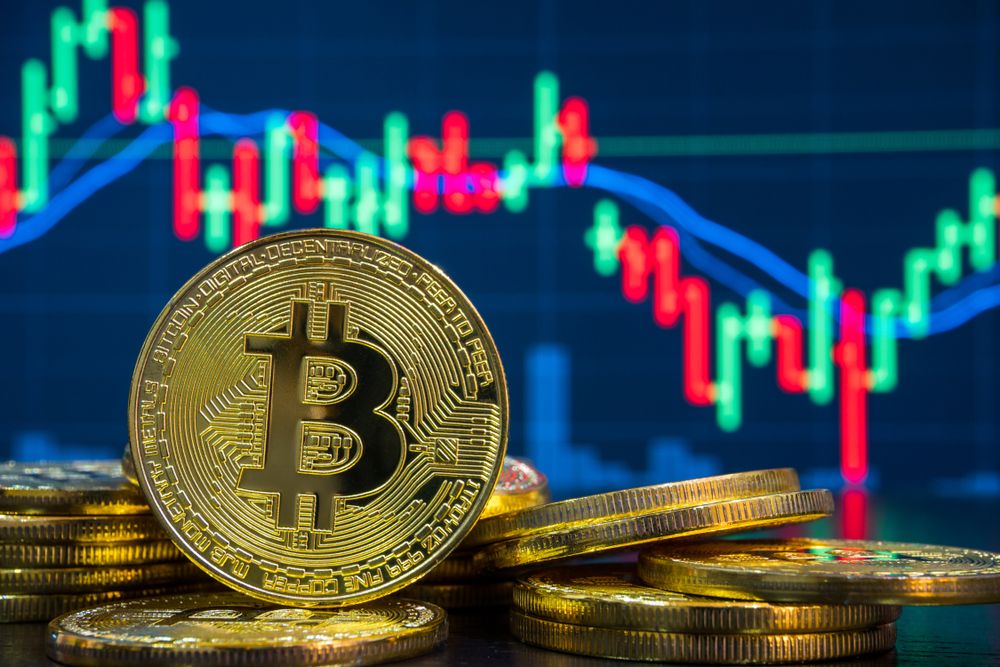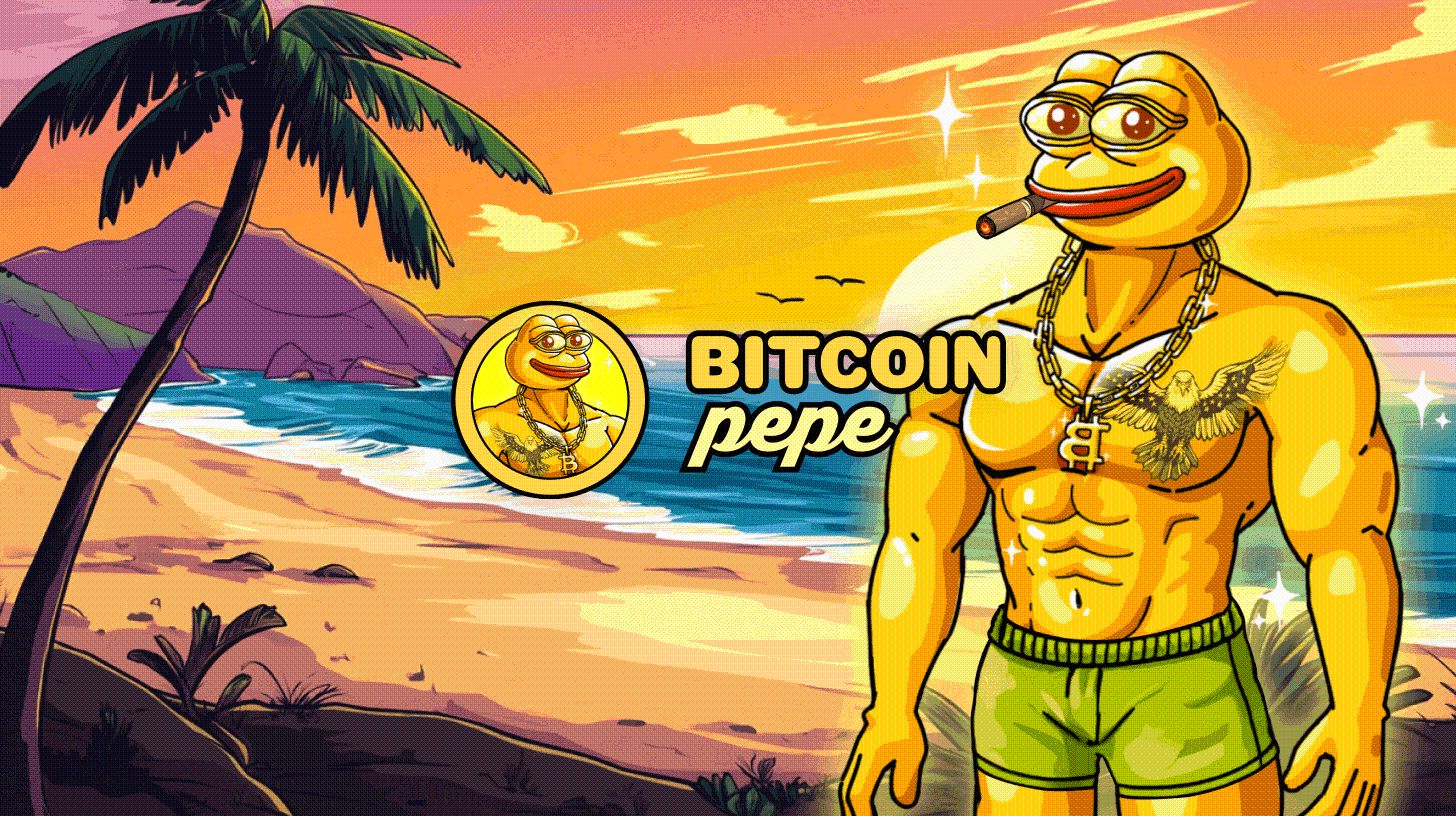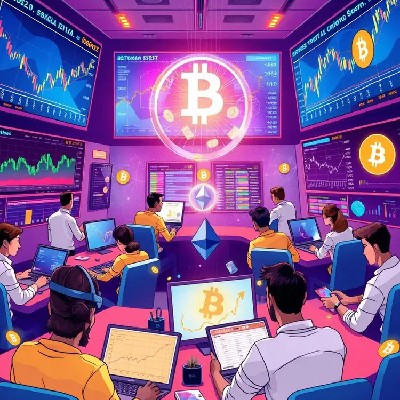Bitget:全球日交易量排名前 4!
BTC 市占率61.19%
Bitget 新幣上架 : Pi Network
BTC/USDT$82647.01 (+0.37%)恐懼與貪婪指數32(恐懼)
山寨季指數:0(比特幣季)
盤前交易幣種PAWS,WCT比特幣現貨 ETF 總淨流量:-$93.2M(1 天);+$445.2M(7 天)。Bitget 新用戶立享 6,200 USDT 歡迎禮包!立即領取
到 Bitget App 隨時隨地輕鬆交易!立即下載
Bitget:全球日交易量排名前 4!
BTC 市占率61.19%
Bitget 新幣上架 : Pi Network
BTC/USDT$82647.01 (+0.37%)恐懼與貪婪指數32(恐懼)
山寨季指數:0(比特幣季)
盤前交易幣種PAWS,WCT比特幣現貨 ETF 總淨流量:-$93.2M(1 天);+$445.2M(7 天)。Bitget 新用戶立享 6,200 USDT 歡迎禮包!立即領取
到 Bitget App 隨時隨地輕鬆交易!立即下載
Bitget:全球日交易量排名前 4!
BTC 市占率61.19%
Bitget 新幣上架 : Pi Network
BTC/USDT$82647.01 (+0.37%)恐懼與貪婪指數32(恐懼)
山寨季指數:0(比特幣季)
盤前交易幣種PAWS,WCT比特幣現貨 ETF 總淨流量:-$93.2M(1 天);+$445.2M(7 天)。Bitget 新用戶立享 6,200 USDT 歡迎禮包!立即領取
到 Bitget App 隨時隨地輕鬆交易!立即下載


batcat 價格BTC
未上架
報價幣種:
TWD
數據來源於第三方提供商。本頁面和提供的資訊不為任何特定的加密貨幣提供背書。想要交易已上架幣種? 點擊此處
NT$0.0009522+0.74%1D
價格走勢圖
最近更新時間 2025-03-30 19:16:37(UTC+0)
市值:--
完全稀釋市值:--
24 小時交易額:--
24 小時交易額/市值:0.00%
24 小時最高價:NT$0.0009549
24 小時最低價:NT$0.0009410
歷史最高價:NT$0.02395
歷史最低價:NT$0.0009410
流通量:-- BTC
總發行量:
1,000,000,000BTC
流通率:0.00%
最大發行量:
--BTC
以 BTC 計價:1 BTC
以 ETH 計價:0.006457 ETH
以 BTC 市值計價:
--
以 ETH 市值計價:
--
合約:
EtBc6g...bqG1R4X(Solana)
更多
您今天對 batcat 感覺如何?
注意:此資訊僅供參考。
batcat 今日價格
batcat 的即時價格是今天每 (BTC / TWD) NT$0.0009522,目前市值為 NT$0.00 TWD。24 小時交易量為 NT$0.00 TWD。BTC 至 TWD 的價格為即時更新。batcat 在過去 24 小時內的變化為 0.74%。其流通供應量為 0 。
BTC 的最高價格是多少?
BTC 的歷史最高價(ATH)為 NT$0.02395,於 2024-06-06 錄得。
BTC 的最低價格是多少?
BTC 的歷史最低價(ATL)為 NT$0.0009410,於 2025-03-29 錄得。
batcat 價格預測
什麼時候是購買 BTC 的好時機? 我現在應該買入還是賣出 BTC?
在決定買入還是賣出 BTC 時,您必須先考慮自己的交易策略。長期交易者和短期交易者的交易活動也會有所不同。Bitget BTC 技術分析 可以提供您交易參考。
根據 BTC 4 小時技術分析,交易訊號為 賣出。
根據 BTC 1 日技術分析,交易訊號為 強力賣出。
根據 BTC 1 週技術分析,交易訊號為 賣出。
BTC 在 2026 的價格是多少?
根據 BTC 的歷史價格表現預測模型,預計 BTC 的價格將在 2026 達到 NT$0.0009455。
BTC 在 2031 的價格是多少?
2031,BTC 的價格預計將上漲 +19.00%。 到 2031 底,預計 BTC 的價格將達到 NT$0.001583,累計投資報酬率為 +68.23%。
batcat 價格歷史(TWD)
過去一年,batcat 價格上漲了 -95.03%。在此期間, 兌 TWD 的最高價格為 NT$0.02395, 兌 TWD 的最低價格為 NT$0.0009410。
時間漲跌幅(%) 最低價
最低價 最高價
最高價 
 最低價
最低價 最高價
最高價 
24h+0.74%NT$0.0009410NT$0.0009549
7d-12.30%NT$0.0009410NT$0.001198
30d-23.50%NT$0.0009410NT$0.002673
90d-53.40%NT$0.0009410NT$0.007936
1y-95.03%NT$0.0009410NT$0.02395
全部時間-95.03%NT$0.0009410(2025-03-29, 昨天 )NT$0.02395(2024-06-06, 298 天前 )
batcat 市場資訊
batcat 持幣
batcat 持幣分布矩陣
batcat 持幣分布集中度
巨鯨
投資者
散戶
batcat 地址持有時長分布
長期持幣者
游資
交易者
coinInfo.name(12)即時價格表

batcat 評級
社群的平均評分
5
此內容僅供參考。
BTC 兌換當地法幣匯率表
1 BTC 兌換 MXN$01 BTC 兌換 GTQQ01 BTC 兌換 CLP$0.031 BTC 兌換 UGXSh0.11 BTC 兌換 HNLL01 BTC 兌換 ZARR01 BTC 兌換 TNDد.ت01 BTC 兌換 IQDع.د0.041 BTC 兌換 TWDNT$01 BTC 兌換 RSDдин.01 BTC 兌換 DOP$01 BTC 兌換 MYRRM01 BTC 兌換 GEL₾01 BTC 兌換 UYU$01 BTC 兌換 MADد.م.01 BTC 兌換 AZN₼01 BTC 兌換 OMRر.ع.01 BTC 兌換 SEKkr01 BTC 兌換 KESSh01 BTC 兌換 UAH₴0
- 1
- 2
- 3
- 4
- 5
最近更新時間 2025-03-30 19:16:37(UTC+0)
batcat 動態

隨著 BTC ETF 持續流入,Bitcoin Pepe 的走向如何
Coinjournal•2025-03-30 18:44

法國 Bpifrance 支持加密貨幣,Bitcoin Pepe 為何可能成為下一個大投資
Coinjournal•2025-03-30 18:44

觀點:如果BTC價格無法恢復穩定增長,可能會引發ETH等主要山寨幣進一步下跌
Bitget•2025-03-30 17:00

分析:今年迄今為止,加密貨幣的市值已蒸發6100億美元,目前BTC的關鍵支撐位可能是8.16萬美元
Bitget•2025-03-30 15:59

數據:Base 凈流入900萬美元,Arbitrum 凈流出440萬美元
Bitget•2025-03-30 15:58
購買其他幣種
用戶還在查詢 batcat 的價格。
batcat 的目前價格是多少?
batcat 的即時價格為 NT$0(BTC/TWD),目前市值為 NT$0 TWD。由於加密貨幣市場全天候不間斷交易,batcat 的價格經常波動。您可以在 Bitget 上查看 batcat 的市場價格及其歷史數據。
batcat 的 24 小時交易量是多少?
在最近 24 小時內,batcat 的交易量為 NT$0.00。
batcat 的歷史最高價是多少?
batcat 的歷史最高價是 NT$0.02395。這個歷史最高價是 batcat 自推出以來的最高價。
我可以在 Bitget 上購買 batcat 嗎?
可以,batcat 目前在 Bitget 的中心化交易平台上可用。如需更詳細的說明,請查看我們很有幫助的 如何購買 指南。
我可以透過投資 batcat 獲得穩定的收入嗎?
當然,Bitget 推出了一個 策略交易平台,其提供智能交易策略,可以自動執行您的交易,幫您賺取收益。
我在哪裡能以最低的費用購買 batcat?
Bitget提供行業領先的交易費用和市場深度,以確保交易者能够從投資中獲利。 您可通過 Bitget 交易所交易。
在哪裡可以購買加密貨幣?
影片部分 - 快速認證、快速交易

如何在 Bitget 完成身分認證以防範詐騙
1. 登入您的 Bitget 帳戶。
2. 如果您是 Bitget 的新用戶,請觀看我們的教學,以了解如何建立帳戶。
3. 將滑鼠移到您的個人頭像上,點擊「未認證」,然後點擊「認證」。
4. 選擇您簽發的國家或地區和證件類型,然後根據指示進行操作。
5. 根據您的偏好,選擇「手機認證」或「電腦認證」。
6. 填寫您的詳細資訊,提交身分證影本,並拍攝一張自拍照。
7. 提交申請後,身分認證就完成了!
加密貨幣投資(包括透過 Bitget 線上購買 batcat)具有市場風險。Bitget 為您提供購買 batcat 的簡便方式,並且盡最大努力讓用戶充分了解我們在交易所提供的每種加密貨幣。但是,我們不對您購買 batcat 可能產生的結果負責。此頁面和其包含的任何資訊均不代表對任何特定加密貨幣的背書認可,任何價格數據均採集自公開互聯網,不被視為來自Bitget的買賣要約。
Bitget 觀點
BGUSER-ESZNU97V
2小時前
I think Pi is now align with BTC. First Pi move seems independent.
BTC0.00%
MOVE-3.32%

Crypto_inside
2小時前
Doge coin ❌ Shiba inu. 💥😳
Dogecoin (DOGE) and Shiba Inu (SHIB) are two popular cryptocurrencies that originated as meme-based tokens but have since gained significant attention and market value.
Similarities:
1. Meme-based origins: Both DOGE and SHIB originated as meme-based tokens, with DOGE featuring the "Doge" Shiba Inu meme and SHIB featuring a similar Shiba Inu character.
2. Community-driven: Both cryptocurrencies have strong community support, with active user bases and dedicated followers.
3. Decentralized: Both DOGE and SHIB are decentralized cryptocurrencies, meaning that there is no central authority controlling them.
Differences:
1. Blockchain: DOGE is based on the Litecoin blockchain, while SHIB is an ERC-20 token built on the Ethereum blockchain.
2. Supply: DOGE has a total supply of 132.67 billion coins, while SHIB has a total supply of 1 quadrillion (1,000,000,000,000,000) tokens.
3. Use cases: DOGE is primarily used for peer-to-peer transactions and charitable donations, while SHIB is focused on building a decentralized ecosystem with various use cases, such as NFTs and DeFi applications.
4. Market capitalization: DOGE has a larger market capitalization than SHIB, with a market cap of around $25.31 billion compared to SHIB's market cap of around $7.47 billion.
Investment and Trading Considerations:
1. Volatility: Both DOGE and SHIB are highly volatile cryptocurrencies, with prices subject to rapid fluctuations.
2. Market sentiment: The prices of both cryptocurrencies are heavily influenced by market sentiment and community enthusiasm.
3. Adoption and use cases: The success of both cryptocurrencies will depend on their ability to develop and promote practical use cases and achieve widespread adoption.
In conclusion, while both DOGE and SHIB have their unique characteristics and features, they share a common meme-based origin and community-driven spirit. As with any investment or trading decision, it's essential to conduct thorough research and consider multiple factors before making a decision.
Thank you...🙂
$SHIB $DOGE $BTC $ETH $XRP $PI $BGB $ADA $SUNDOG $NEIROETH $DOGS $BCH $QTUM $COQ $AI $PONKE $PEPE $MEME
SUNDOG+3.17%
BTC0.00%
BGUSER-6R9PPRUG
2小時前
$ IMT
In the world of cryptocurrency, market sentiment is one of the most important factors influencing the price action of any digital asset. Bearish sentiment, characterized by a general outlook of pessimism, can significantly impact a token's price. For $IMT , the prevailing bearish sentiment can be a signal of a potential market correction or downward price trend. This could be influenced by a variety of factors, including broader market conditions, technical indicators, or external developments that shift investor sentiment toward caution or fear.
In this deep dive, we'll explore the reasons behind the bearish sentiment surrounding $IMT and examine whether market corrections will impact its price. We will also look at how such sentiment can affect both short-term and long-term price movements and what traders and investors should watch out for.
1. What is Bearish Sentiment?
Bearish sentiment refers to a general feeling of pessimism in the market, where investors expect the price of an asset to fall. In the context of $IMT, bearish sentiment means that traders and investors expect the price of the token to decline due to a range of factors. This sentiment often leads to more selling than buying, as investors look to exit positions before prices fall further.
When bearish sentiment takes hold, the following factors can come into play:
Declining demand: Fewer investors are willing to buy the token at higher prices.
Increased selling pressure: More holders might want to liquidate their positions in anticipation of a decline.
Market fear and panic: Negative news, poor performance, or general uncertainty can cause panic selling, driving prices even lower.
2. Reasons Behind Bearish Sentiment in $IMT
There are several reasons why bearish sentiment might take hold for $IMT:
a) Broader Market Conditions
Global Economic Conditions: Like all cryptocurrencies, $IMT is susceptible to macroeconomic factors. If there is a global economic downturn, such as a recession, inflation fears, or rising interest rates, investors may pull back from riskier assets like cryptocurrencies. During periods of economic uncertainty, many investors opt for safe-haven assets such as gold or the US dollar, causing digital assets like $IMT to face downward pressure.
Crypto Market-Wide Bearish Trends: Sometimes, bearish sentiment around a specific cryptocurrency is driven by larger trends within the entire crypto market. If major cryptocurrencies like Bitcoin (BTC) or Ethereum (ETH) are experiencing a downturn, the effect tends to ripple across smaller altcoins, including $IMT. A general market correction can trigger a broad sell-off, leading to a decline in the value of $IMT as investors turn risk-averse.
b) Regulatory Concerns
The cryptocurrency market is still relatively young and under the scrutiny of regulators across the world. If there is negative news regarding regulatory crackdowns or governments introducing stringent regulations against cryptocurrencies, this can lead to panic and a rush to liquidate positions.
For $IMT, if its project faces regulatory hurdles or if it operates in a jurisdiction where crypto regulations are becoming more restrictive, this could create negative sentiment. Regulatory uncertainty can erode investor confidence and trigger a bearish trend in the token's price.
c) Weak Market Fundamentals
Project Development Delays: If $IMT fails to deliver on promised upgrades, integrations, or key partnerships, it can cause investors to lose confidence in the long-term potential of the project. A lack of updates or technical glitches might signal that the project is stagnating, which can trigger sell-offs.
Lack of Utility or Adoption: $IMT may face a scenario where its use case is questioned, or its adoption rate is slower than expected. Without clear utility or growing demand for the token, the market may begin to see $IMT as an underperforming asset, leading to a decrease in demand and ultimately price decline.
d) Whale Manipulation and Market Sentiment
Whales are large investors or entities that hold substantial amounts of $IMT. If a whale starts selling off large amounts of the token, it can trigger panic among smaller investors, leading to more selling. This sell-off by a few large holders can contribute to a cascading effect, where others follow suit and cause a significant price drop.
Negative sentiment can also be influenced by social media discussions or news outlets, which can exacerbate panic selling, further fueling the bearish trend.
e) Technical Indicators Signaling Weakness
Resistance Levels: If $IMT faces rejection at key resistance levels (a price point at which the token struggles to move past), this could signal the inability of buyers to push the price higher. This type of price action could create a technical bearish scenario, where traders expect the price to fall back to lower support levels.
Bearish Divergence in RSI: The Relative Strength Index (RSI) is a key momentum indicator. A bearish divergence occurs when the price of $IMT is making higher highs, but the RSI is making lower highs. This indicates that while the price is increasing, the momentum behind it is weakening, signaling potential for a reversal to the downside.
Death Cross: A Death Cross occurs when the short-term moving average (such as the 50-day MA) crosses below the long-term moving average (such as the 200-day MA). This technical pattern is often seen as a bearish signal, suggesting that the market sentiment is turning negative, which could lead to further price declines for $IMT.
3. The Impact of Market Corrections on $IMT's Price
A market correction refers to a temporary decline in the price of an asset (typically around 10% or more from its recent highs). For $IMT, a correction can occur due to a combination of factors, including broader market sell-offs, technical factors, and shifts in investor sentiment.
a) Short-Term Impact: Price Declines and Increased Volatility
Increased Volatility: During market corrections, prices often experience high volatility. For $IMT, this means that while its price could dip sharply in the short term, it may also experience large price swings as buyers look for buying opportunities during the dip, and sellers attempt to exit positions.
Fear and Panic: In the short term, bearish sentiment can trigger panic selling, causing $IMT’s price to rapidly fall. This can create a negative feedback loop, where declining prices cause further panic, leading to additional selling and further price declines.
b) Long-Term Impact: Resetting Expectations
Recalibrating Valuations: A market correction often serves as a period of price consolidation, where overvalued assets are brought back to more sustainable levels. If $IMT has been in an overbought condition, a correction could be beneficial by helping to reset unrealistic price expectations. Once this price correction occurs, $IMT might establish a more solid foundation for future growth.
Accumulation Opportunities: Corrections also provide a chance for long-term investors to accumulate tokens at a lower price. If $IMT has a strong use case and technological foundation, investors might view a correction as an opportunity to buy the dip and hold for future potential.
4. Indicators to Watch for Signs of a Bearish Trend
If bearish sentiment continues, there are several key indicators to watch for that will confirm a sustained downtrend or continued market correction for $IMT:
Breaking Support Levels: If $IMT breaks below important support levels, it could confirm a bearish trend. Watch for the price to close below key technical levels such as the 50-day or 200-day moving average or significant horizontal support.
Decreasing Volume: During a bearish trend, volume often declines, signaling that the buying interest has faded and that fewer participants are willing to enter at current price levels.
Increased Selling Pressure: A rise in selling volume or large sell-offs by whales can indicate that sentiment is shifting towards the negative, potentially leading to further price declines.
5. How Traders Can Respond to Bearish Sentiment
a) Risk Management Strategies
Stop-Loss Orders: To manage risk during a bearish trend, traders may want to implement stop-loss orders to automatically sell their $IMT holdings at a predetermined price, protecting them from further declines.
Hedging Positions: Traders can also hedge against bearish price movements by using options or futures contracts to take short positions on $IMT or use other assets as a hedge.
b) Waiting for Market Stabilization
In the event of a market correction, some traders prefer to wait until the market stabilizes before re-entering positions. A period of price consolidation can help determine if $IMT has found a new equilibrium price and is ready for a recovery.
Conclusion: Will Market Corrections Impact $IMT’s Price?
Bearish sentiment and market corrections can have a profound impact on the price of $IMT. If the broader market continues to show signs of weakness, $IMT may experience significant downward pressure, exacerbated by declining market confidence and technical indicators signaling a reversal. However, market corrections are also natural phases in asset price cycles and can present opportunities for long-term investors to acquire tokens at lower prices.
For traders and investors, it’s essential to carefully monitor technical signals, market sentiment, and broader economic factors to assess whether the bearish trend is short-lived or indicative of more prolonged price decline.
$IMT
BTC0.00%
MOVE-3.32%

Mi$h_£va💸
2小時前
$ IMT
In the world of cryptocurrency, market sentiment is one of the most important factors influencing the price action of any digital asset. Bearish sentiment, characterized by a general outlook of pessimism, can significantly impact a token's price. For $IMT , the prevailing bearish sentiment can be a signal of a potential market correction or downward price trend. This could be influenced by a variety of factors, including broader market conditions, technical indicators, or external developments that shift investor sentiment toward caution or fear.
In this deep dive, we'll explore the reasons behind the bearish sentiment surrounding $IMT and examine whether market corrections will impact its price. We will also look at how such sentiment can affect both short-term and long-term price movements and what traders and investors should watch out for.
1. What is Bearish Sentiment?
Bearish sentiment refers to a general feeling of pessimism in the market, where investors expect the price of an asset to fall. In the context of $IMT, bearish sentiment means that traders and investors expect the price of the token to decline due to a range of factors. This sentiment often leads to more selling than buying, as investors look to exit positions before prices fall further.
When bearish sentiment takes hold, the following factors can come into play:
Declining demand: Fewer investors are willing to buy the token at higher prices.
Increased selling pressure: More holders might want to liquidate their positions in anticipation of a decline.
Market fear and panic: Negative news, poor performance, or general uncertainty can cause panic selling, driving prices even lower.
2. Reasons Behind Bearish Sentiment in $IMT
There are several reasons why bearish sentiment might take hold for $IMT:
a) Broader Market Conditions
Global Economic Conditions: Like all cryptocurrencies, $IMT is susceptible to macroeconomic factors. If there is a global economic downturn, such as a recession, inflation fears, or rising interest rates, investors may pull back from riskier assets like cryptocurrencies. During periods of economic uncertainty, many investors opt for safe-haven assets such as gold or the US dollar, causing digital assets like $IMT to face downward pressure.
Crypto Market-Wide Bearish Trends: Sometimes, bearish sentiment around a specific cryptocurrency is driven by larger trends within the entire crypto market. If major cryptocurrencies like Bitcoin (BTC) or Ethereum (ETH) are experiencing a downturn, the effect tends to ripple across smaller altcoins, including $IMT. A general market correction can trigger a broad sell-off, leading to a decline in the value of $IMT as investors turn risk-averse.
b) Regulatory Concerns
The cryptocurrency market is still relatively young and under the scrutiny of regulators across the world. If there is negative news regarding regulatory crackdowns or governments introducing stringent regulations against cryptocurrencies, this can lead to panic and a rush to liquidate positions.
For $IMT, if its project faces regulatory hurdles or if it operates in a jurisdiction where crypto regulations are becoming more restrictive, this could create negative sentiment. Regulatory uncertainty can erode investor confidence and trigger a bearish trend in the token's price.
c) Weak Market Fundamentals
Project Development Delays: If $IMT fails to deliver on promised upgrades, integrations, or key partnerships, it can cause investors to lose confidence in the long-term potential of the project. A lack of updates or technical glitches might signal that the project is stagnating, which can trigger sell-offs.
Lack of Utility or Adoption: $IMT may face a scenario where its use case is questioned, or its adoption rate is slower than expected. Without clear utility or growing demand for the token, the market may begin to see $IMT as an underperforming asset, leading to a decrease in demand and ultimately price decline.
d) Whale Manipulation and Market Sentiment
Whales are large investors or entities that hold substantial amounts of $IMT. If a whale starts selling off large amounts of the token, it can trigger panic among smaller investors, leading to more selling. This sell-off by a few large holders can contribute to a cascading effect, where others follow suit and cause a significant price drop.
Negative sentiment can also be influenced by social media discussions or news outlets, which can exacerbate panic selling, further fueling the bearish trend.
e) Technical Indicators Signaling Weakness
Resistance Levels: If $IMT faces rejection at key resistance levels (a price point at which the token struggles to move past), this could signal the inability of buyers to push the price higher. This type of price action could create a technical bearish scenario, where traders expect the price to fall back to lower support levels.
Bearish Divergence in RSI: The Relative Strength Index (RSI) is a key momentum indicator. A bearish divergence occurs when the price of $IMT is making higher highs, but the RSI is making lower highs. This indicates that while the price is increasing, the momentum behind it is weakening, signaling potential for a reversal to the downside.
Death Cross: A Death Cross occurs when the short-term moving average (such as the 50-day MA) crosses below the long-term moving average (such as the 200-day MA). This technical pattern is often seen as a bearish signal, suggesting that the market sentiment is turning negative, which could lead to further price declines for $IMT.
3. The Impact of Market Corrections on $IMT's Price
A market correction refers to a temporary decline in the price of an asset (typically around 10% or more from its recent highs). For $IMT, a correction can occur due to a combination of factors, including broader market sell-offs, technical factors, and shifts in investor sentiment.
a) Short-Term Impact: Price Declines and Increased Volatility
Increased Volatility: During market corrections, prices often experience high volatility. For $IMT, this means that while its price could dip sharply in the short term, it may also experience large price swings as buyers look for buying opportunities during the dip, and sellers attempt to exit positions.
Fear and Panic: In the short term, bearish sentiment can trigger panic selling, causing $IMT’s price to rapidly fall. This can create a negative feedback loop, where declining prices cause further panic, leading to additional selling and further price declines.
b) Long-Term Impact: Resetting Expectations
Recalibrating Valuations: A market correction often serves as a period of price consolidation, where overvalued assets are brought back to more sustainable levels. If $IMT has been in an overbought condition, a correction could be beneficial by helping to reset unrealistic price expectations. Once this price correction occurs, $IMT might establish a more solid foundation for future growth.
Accumulation Opportunities: Corrections also provide a chance for long-term investors to accumulate tokens at a lower price. If $IMT has a strong use case and technological foundation, investors might view a correction as an opportunity to buy the dip and hold for future potential.
4. Indicators to Watch for Signs of a Bearish Trend
If bearish sentiment continues, there are several key indicators to watch for that will confirm a sustained downtrend or continued market correction for $IMT:
Breaking Support Levels: If $IMT breaks below important support levels, it could confirm a bearish trend. Watch for the price to close below key technical levels such as the 50-day or 200-day moving average or significant horizontal support.
Decreasing Volume: During a bearish trend, volume often declines, signaling that the buying interest has faded and that fewer participants are willing to enter at current price levels.
Increased Selling Pressure: A rise in selling volume or large sell-offs by whales can indicate that sentiment is shifting towards the negative, potentially leading to further price declines.
5. How Traders Can Respond to Bearish Sentiment
a) Risk Management Strategies
Stop-Loss Orders: To manage risk during a bearish trend, traders may want to implement stop-loss orders to automatically sell their $IMT holdings at a predetermined price, protecting them from further declines.
Hedging Positions: Traders can also hedge against bearish price movements by using options or futures contracts to take short positions on $IMT or use other assets as a hedge.
b) Waiting for Market Stabilization
In the event of a market correction, some traders prefer to wait until the market stabilizes before re-entering positions. A period of price consolidation can help determine if $IMT has found a new equilibrium price and is ready for a recovery.
Conclusion: Will Market Corrections Impact $IMT’s Price?
Bearish sentiment and market corrections can have a profound impact on the price of $IMT. If the broader market continues to show signs of weakness, $IMT may experience significant downward pressure, exacerbated by declining market confidence and technical indicators signaling a reversal. However, market corrections are also natural phases in asset price cycles and can present opportunities for long-term investors to acquire tokens at lower prices.
For traders and investors, it’s essential to carefully monitor technical signals, market sentiment, and broader economic factors to assess whether the bearish trend is short-lived or indicative of more prolonged price decline.
$IMT
BTC0.00%
MOVE-3.32%

Crypto_inside
2小時前
Etherium Blocks ❌ Solana Blocks. 💥😳
Ethereum and Solana are two popular blockchain platforms that enable the creation of decentralized applications (dApps). Here's a comparison of their block structures:
Ethereum Blocks:
1. Block Time: Ethereum blocks are generated every 15 seconds on average.
2. Block Size: Ethereum blocks have a variable size, but the maximum size is around 8 million gas units.
3. Transactions: Ethereum blocks can contain multiple transactions, including smart contract executions and token transfers.
4. Gas Mechanism: Ethereum uses a gas mechanism to measure the computational effort required to execute transactions and smart contracts.
5. Block Reward: Ethereum's block reward is currently set at 2 ETH per block, plus transaction fees.
Solana Blocks:
1. Block Time: Solana blocks are generated every 400 milliseconds on average.
2. Block Size: Solana blocks have a variable size, but the maximum size is around 128 MB.
3. Transactions: Solana blocks can contain multiple transactions, including smart contract executions and token transfers.
4. Proof of History (PoH): Solana uses a proof-of-stake (PoS) consensus algorithm called Proof of History (PoH), which allows for faster block times and higher scalability.
5. Block Reward: Solana's block reward is currently set at 1.5 SOL per block, plus transaction fees.
Key Differences:
1. Block Time: Solana blocks are generated much faster than Ethereum blocks.
2. Block Size: Solana blocks can be larger than Ethereum blocks.
3. Scalability: Solana's PoH consensus algorithm allows for higher scalability than Ethereum's proof-of-work (PoW) consensus algorithm.
4. Gas Mechanism: Ethereum uses a gas mechanism, while Solana does not.
Thank you...🙂
$BTC $ETH $SOL $PI $ADA $BGB $XRP $ETC $AI $DOGS $SUNDOG $LTC $BCH $CATS $SHIB
SUNDOG+3.17%
BTC0.00%
相關資產
相近市值
在所有 Bitget 資產中,這8種資產的市值最接近 batcat。


































